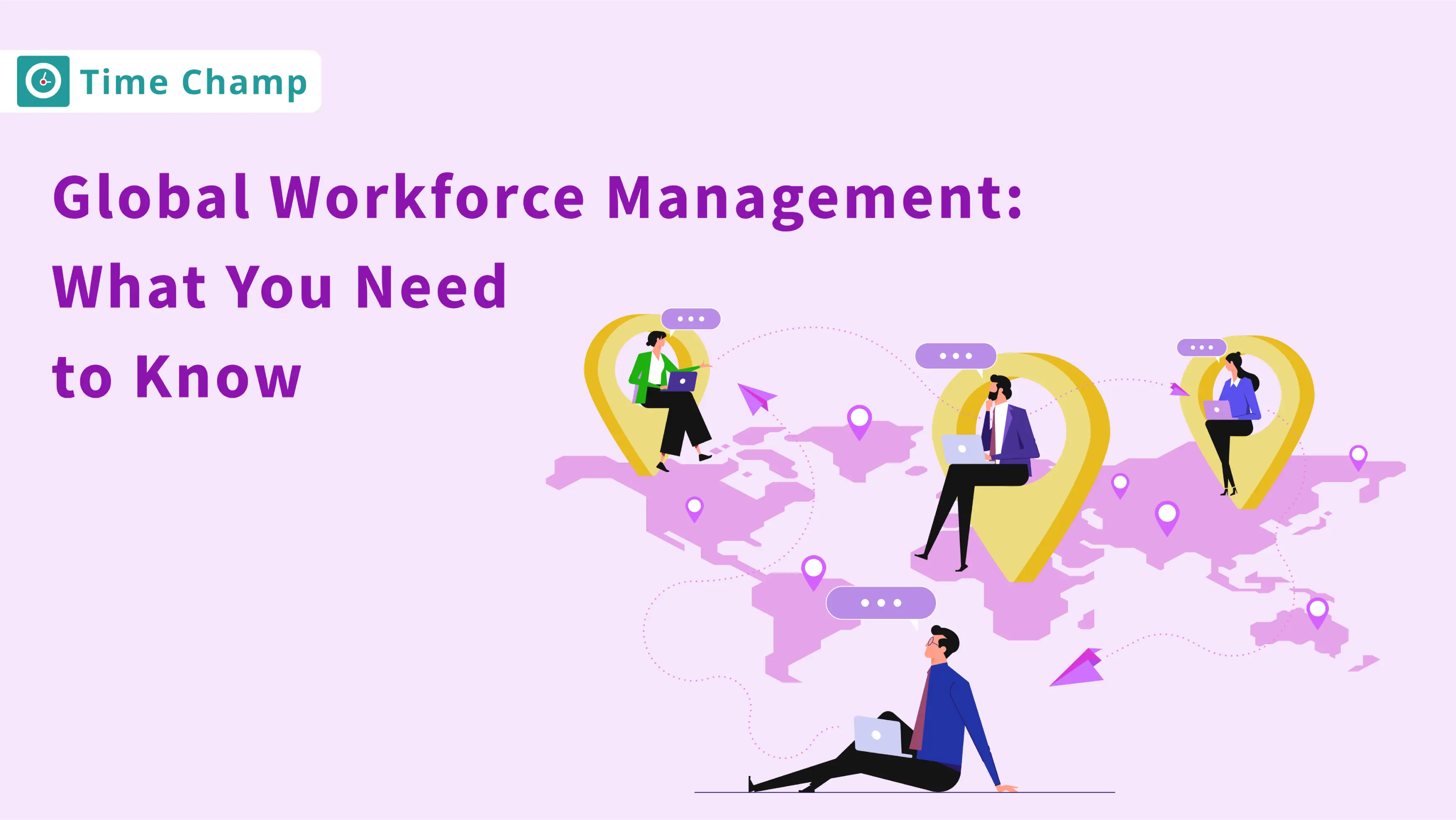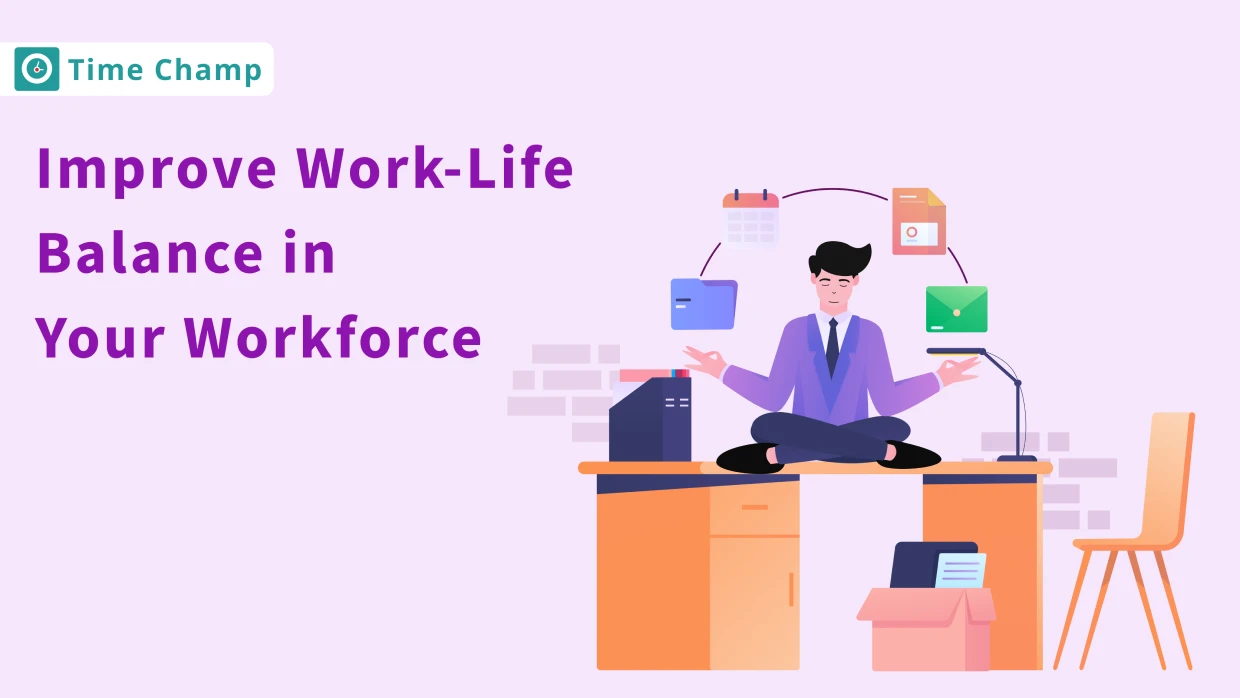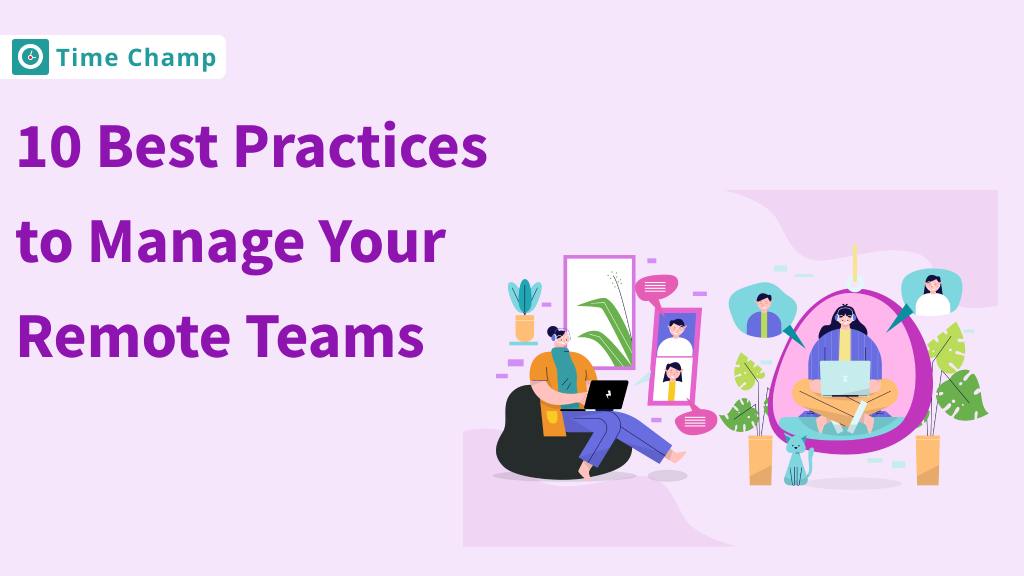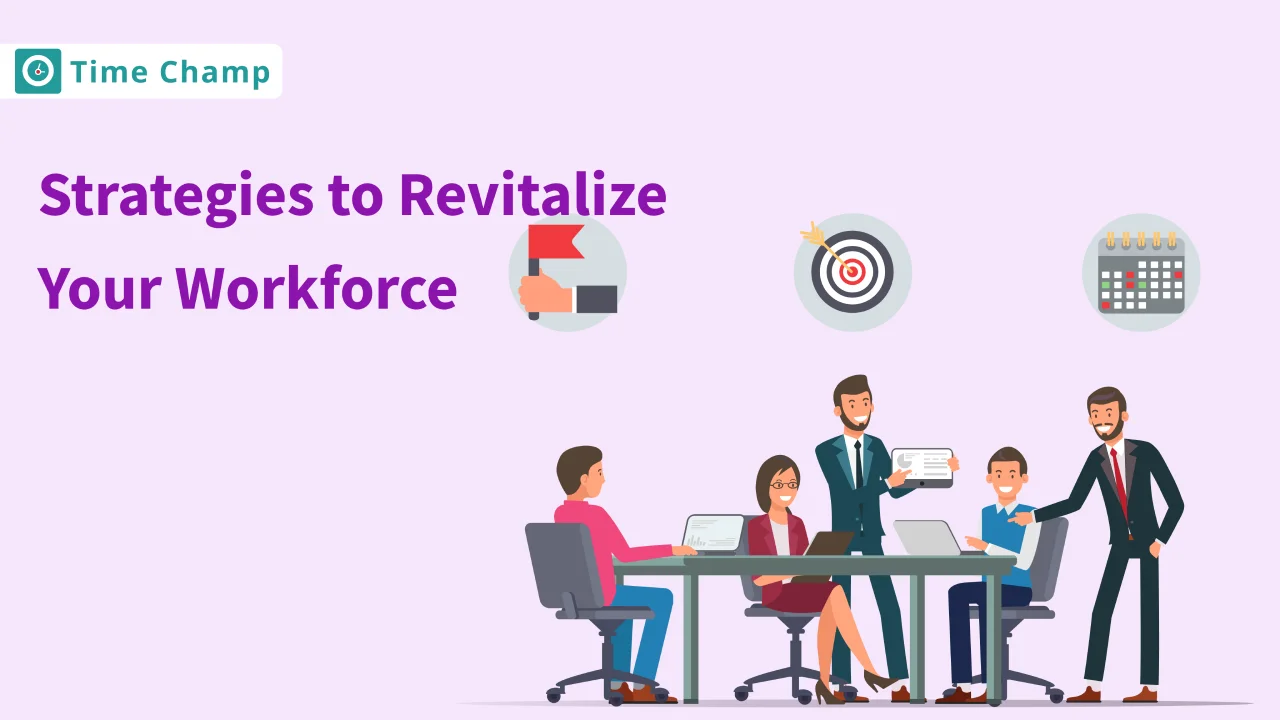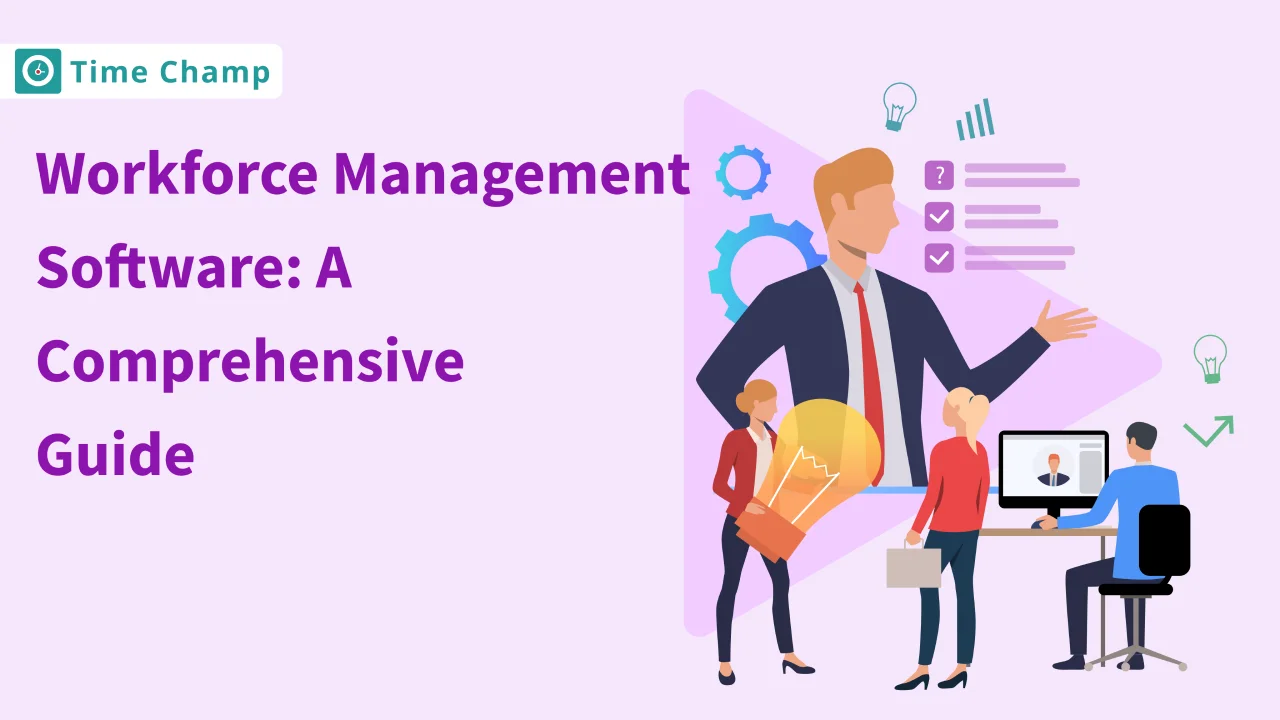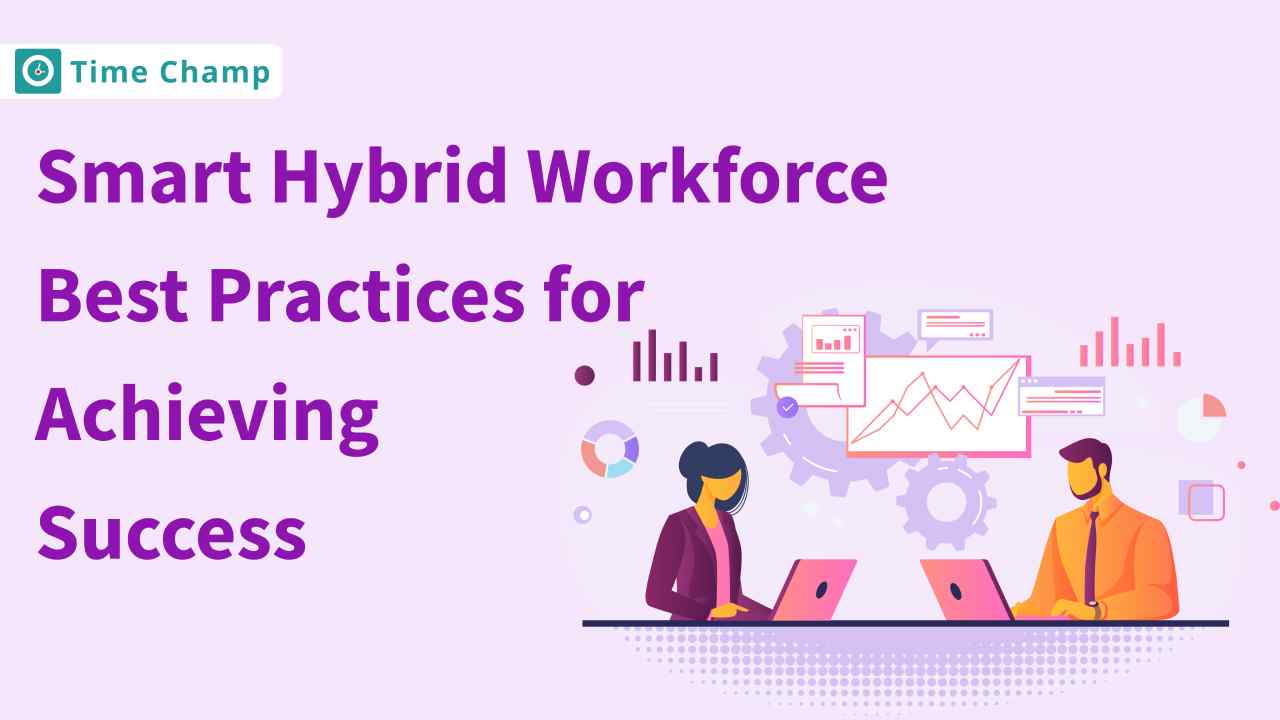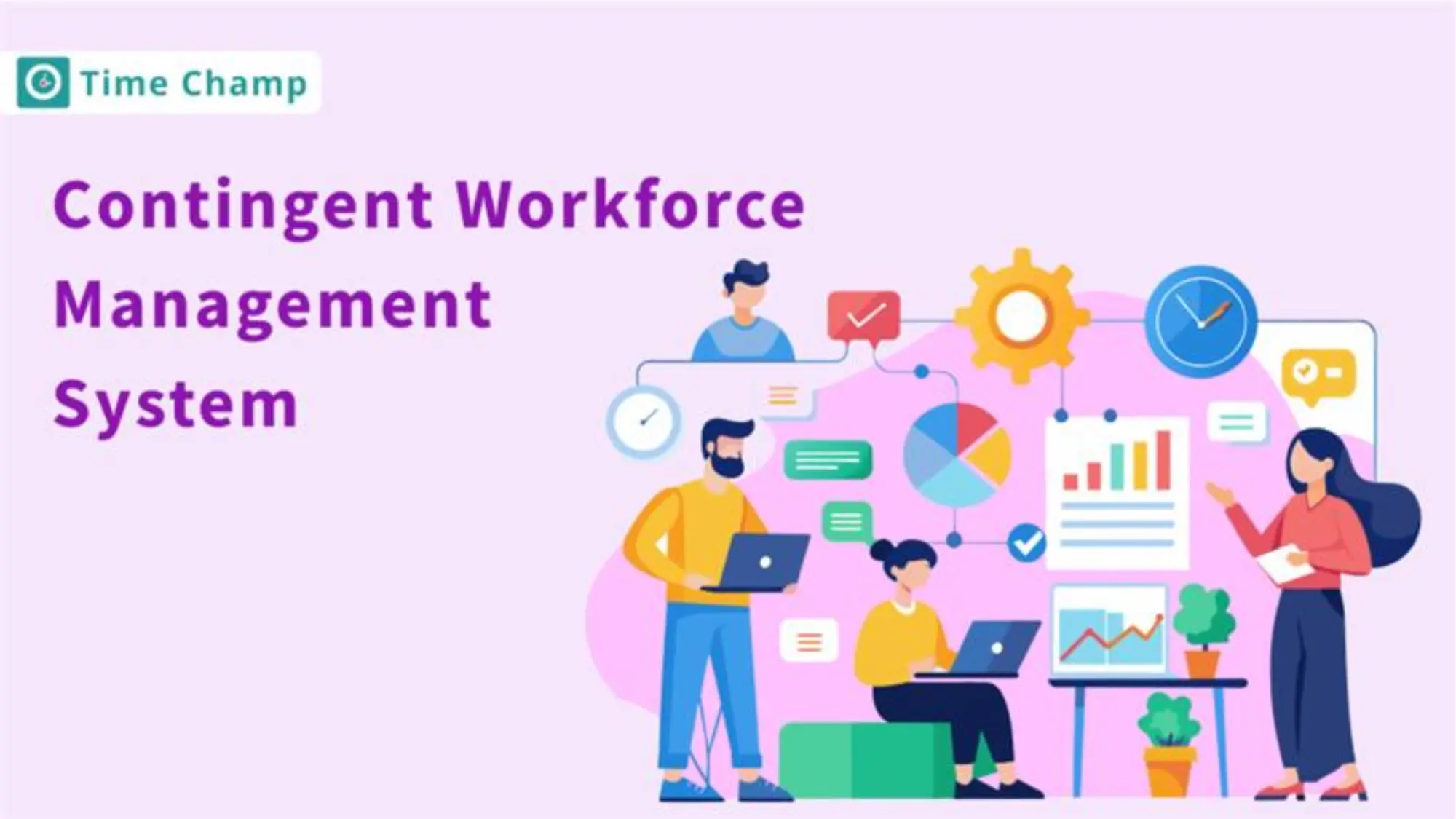In 2025, global workforce management (GWM) is about the strategic management of employees in different countries, time zones, and cultures. With remote work, diverse labour regulations, and evolving talent demands, organisations must effectively balance compliance, productivity, and employee engagement to operate seamlessly across the globe.
This blog covers the fundamentals of international workforce management , such as key metrics, management steps, and HR best practices. With these insights, businesses can improve performance , minimise risks, and develop a scalable, future-ready workforce.
What is Global Workforce Management?
Global workforce management refers to the strategic planning, monitoring, and optimisation of workers in more than one country. It integrates compliance, payroll, workforce planning and employee engagement to deliver a seamless operation, productivity, and uniform policies in a global business environment.
Global workforce management in 2025 is a crucial approach to companies that will expand across borders. It assists organisations to navigate international labour regulations, cultural diversity, and remote-work models without compromising operational efficiency. According to a report by LLCBuddy , by 2025, an estimated 88% of large enterprises and 56% of small-to-medium businesses are expected to adopt workforce management solutions.
With global workforce planning, companies can enhance talent retention, mitigate compliance risks, and develop a single strategy for managing diverse teams.
Global workforce management includes key components such as:
- Workforce planning and forecasting
- International workforce compliance management
- Standardisation of payroll and benefits across countries
- Global collaboration and productivity workforce strategy
- Diversity, equity, and inclusion (DEI) programs
- Employee engagement and retention monitoring
- Global role training and development
Why Global Workforce Management is Essential?
Global workforce management (GWM) plays a core role in 2025 because organisations are expanding into various countries and increasingly adopting a hybrid work model. According to Exploding Topics , hybrid or full-remote arrangements are backed by approximately 70% of enterprises all over the world, and this raises the necessity of systematic policies and compliance frameworks.
Firms that have invested in workforce management tools are already seeing quantifiable benefits. According to research done by CORE , workforce management solutions can boost productivity by an average of 30% and decrease labour expense by 15%, and that is why workforce planning is so vital for long-term growth.
Key reasons why GWM is necessary:
- Compliance & Risk Mitigation - Prevent expensive international penalties and regulatory breaches.
- Talent Retention & Engagement - Robust global strategies help reduce employee turnover by nearly 25%.
- Efficiency & Productivity - Workforce management tools can enhance productivity by 20% and reduce labour costs by 15%.
- Scalable Growth – Structured workforce planning enables smooth expansion into new markets.
- Cultural Adaptability - Increases inclusivity and teamwork across global teams.
What are the Key Metrics Used in Global Workforce Management?
Monitoring key metrics in global workforce management ensures organisations can enhance performance, identify risks, and optimise employee experiences across all regions. These metrics offer actionable insights that aid compliance, efficiency, and talent retention.
Key metrics in global workforce management include:
- Employee Turnover Rate - This is used to measure the percentage of employees who leave within a period of time. It can be used to assess the retention strategies.
- Time-to-Fill Positions -Measures how long it takes to fill open roles, providing insight into the efficiency and effectiveness of the recruitment process.
- Employee Engagement Score - Measures the level of satisfaction and motivation, usually through surveys.
- Absenteeism Rate - It tracks unexpected employee absences, which impacts productivity.
- Labour Cost per Employee - This evaluates the total workforce cost in terms of salaries, benefits and training against the headcount.
- Compliance Adherence Rate – Ensures that workforce practices comply with labour laws and international regulations.
- Productivity per Employee - Measures the output in relation to the number of hours worked or the amount of revenue contributed.
How to Manage Global Workforce
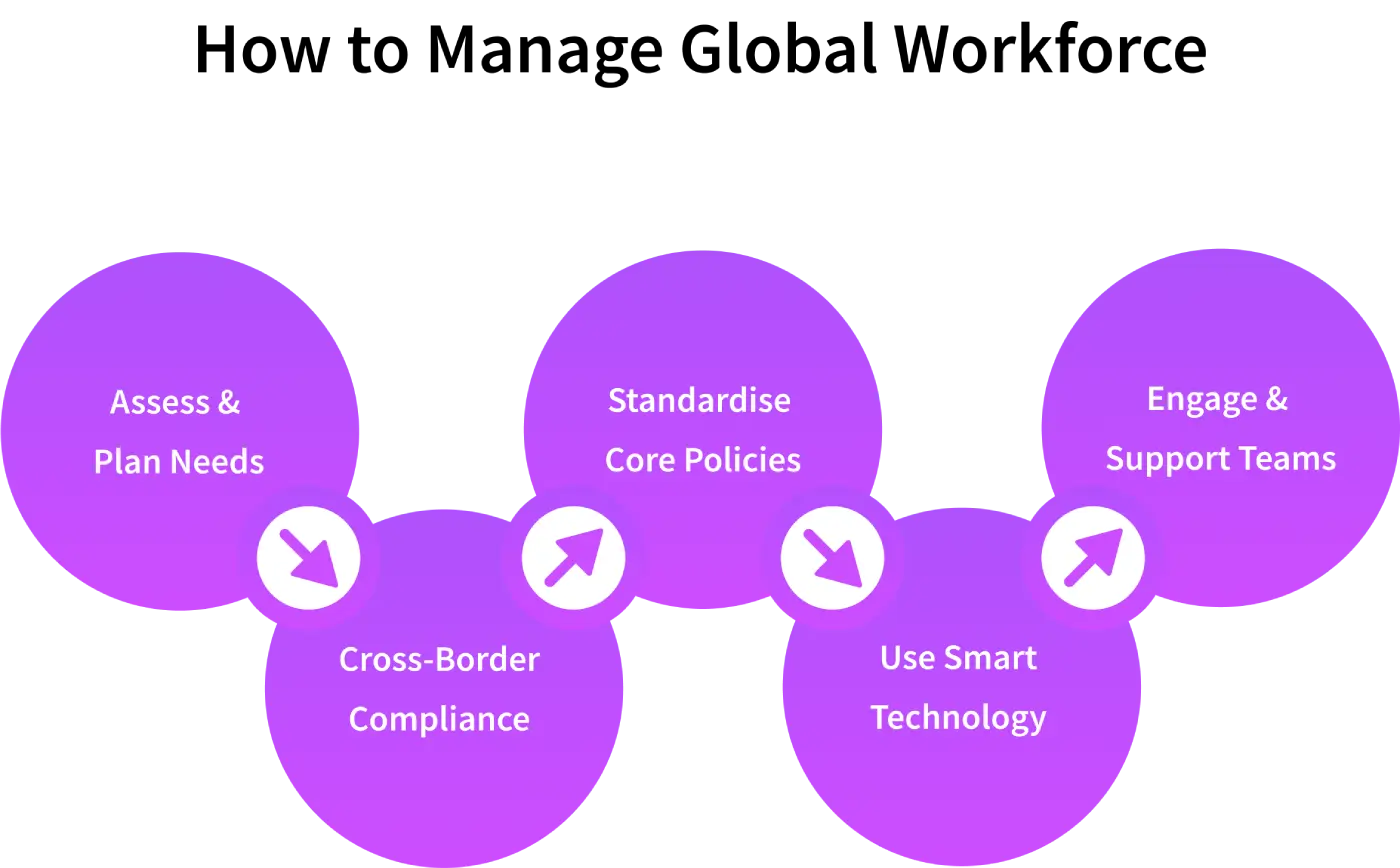
Managing a global workforce is a balance between compliance, cultural awareness and technology. An organised strategy guarantees seamless operations and increases employee involvement in various regions.
1. Assess and Plan Workforce Needs
Organisations need to evaluate current workforce size, identify skill gaps, and predict future hiring requirements. Making talent strategies compatible with business goals guarantees scalability and minimises the threat of understaffing within strategic positions.
2. Ensure Compliance Across Borders
It is crucial to remain informed about local labour laws, taxes, and employment regulations to avoid fines. Legal expertise and compliance management tools are used to simplify payroll, and visa procedures in various countries.
3. Standardise Core Policies
Consistent HR policies for payroll, performance management, and leave tracking create fairness across the workforce. Meanwhile, local flexibility will be necessary to accommodate the cultural expectations and regional laws.
4. Leverage Technology
Global workforce solutions make it easy to manage HR processes and workforce operations through automation in recruitment, scheduling, and payroll. AI analytics can also give real-time data on productivity, making it easier to make decisions and allocate resources.
5. Engage and Support Employees
Open communication, recognition programs, and professional development are some of the engagement strategies that enhance employee retention. Developing inclusive policies and reinforcing cultural diversity enhances morale across the global staff.
What Are the Tips for Effectively Managing a Global Workforce?

Cultural awareness, systematic communication and supportive leadership are necessary in managing a global workforce effectively. The tips below help organisations in developing productive and engaged global teams.
1. Embrace Cultural Diversity
Recognise and respect cultural differences to foster stronger workplace relationships. Offer cross-cultural training to reduce misunderstandings. Promote local cultures so that employees feel valued.
2. Streamline Communication Channels
Connect teams globally through centralised platforms. Establish clear guidelines for meetings and updates. Promote transparent feedback to ensure openness and collaboration across regions.
3. Provide Flexible Work Arrangements
Provide flexible schedules to balance global time zones. Provide remote work policies to improve work-life balance . Adapt roles to suit local employee requirements.
4. Invest in Employee Development
Offer continuous upskilling opportunities to keep up with changing roles. Provide mentorship to support career development and training to fit regional considerations.
5. Implement Strong Leadership Practices
Effective leadership involves setting clear objectives to ensure accountability, recognising accomplishments to increase motivation, and delivering constructive feedback to promote continuous performance improvement.
6. Leverage Data-Driven Insights
Monitor important workforce indicators such as turnover and absenteeism. Use analytics to recognise gaps in productivity. Track trends in order to plan workforce strategies.
7. Prioritise Employee Well-being
Implement wellness programs to support physical health and provide mental health resources to strengthen emotional well-being. Promote work-life balance with supportive policies.
To Sum Up
In today’s increasingly global workplace, the ability to manage diverse teams effectively is essential for organisational success. Companies that invest in clear strategies, modern tools, and employee well-being are better positioned to adapt to regulatory changes, attract top talent, and thrive in competitive markets. A strategically managed global workforce fuels growth, innovation, and long-term business resilience.
Frequently Asked Questions
HR departments should be trained in cross-cultural communication, international labour laws, compliance, and online HR systems. Numerous companies also focus on DEI and global readiness leadership training.
To mitigate the risks of legal liability, AI systems scan databases of labour laws worldwide and send real-time alerts whenever a policy is updated. For instance, the system might notify managers about new overtime rules in Germany or revised minimum wage legislation in India.
Financial penalties, reputational loss, limited market access, and employee dissatisfaction are included in the risks. In the worst scenario, companies can be sued or their licences suspended.
The most effective solution often depends on the company’s size and needs, but popular choices include Time Champ, ADP, and Deel, which provide compliance, payroll, analytics, and workforce engagement capabilities.

